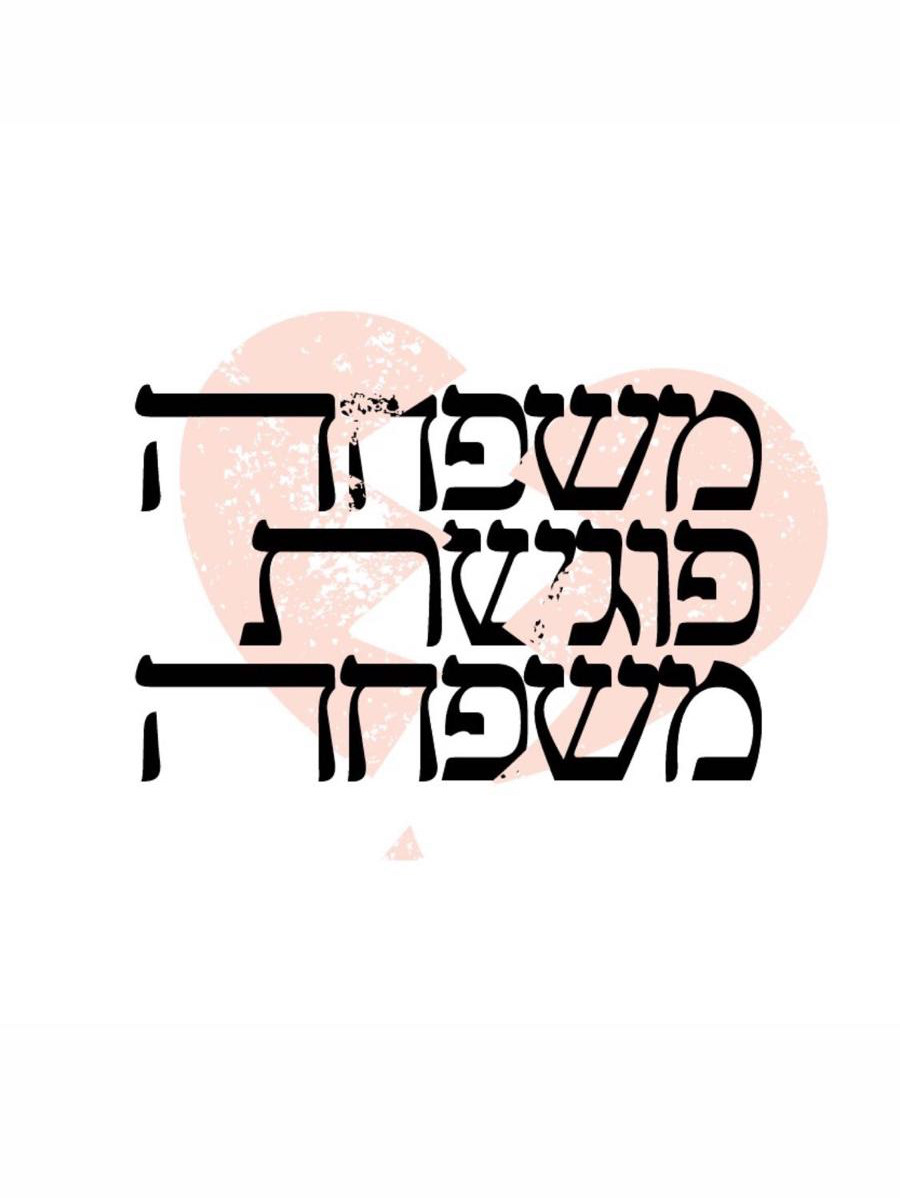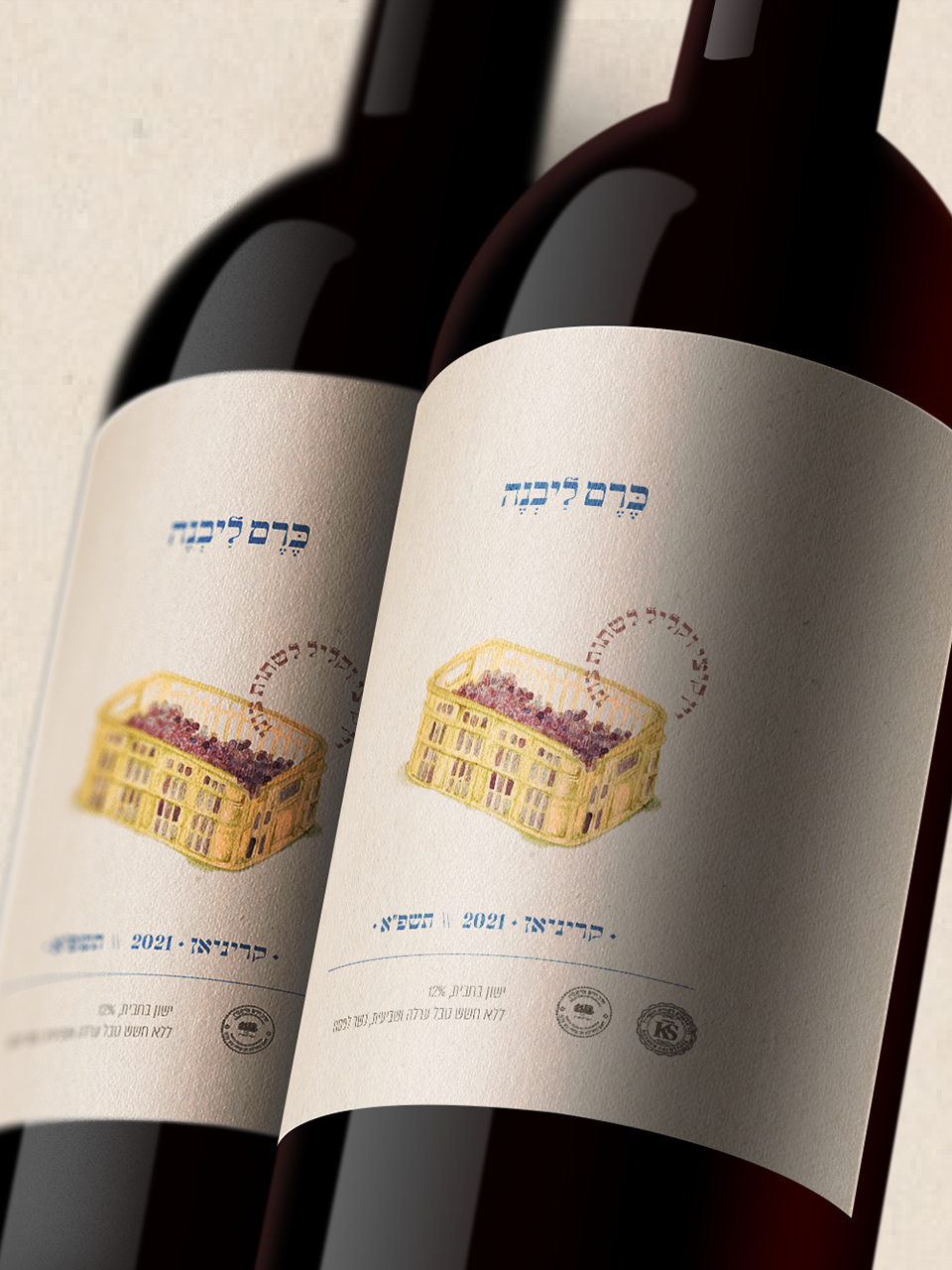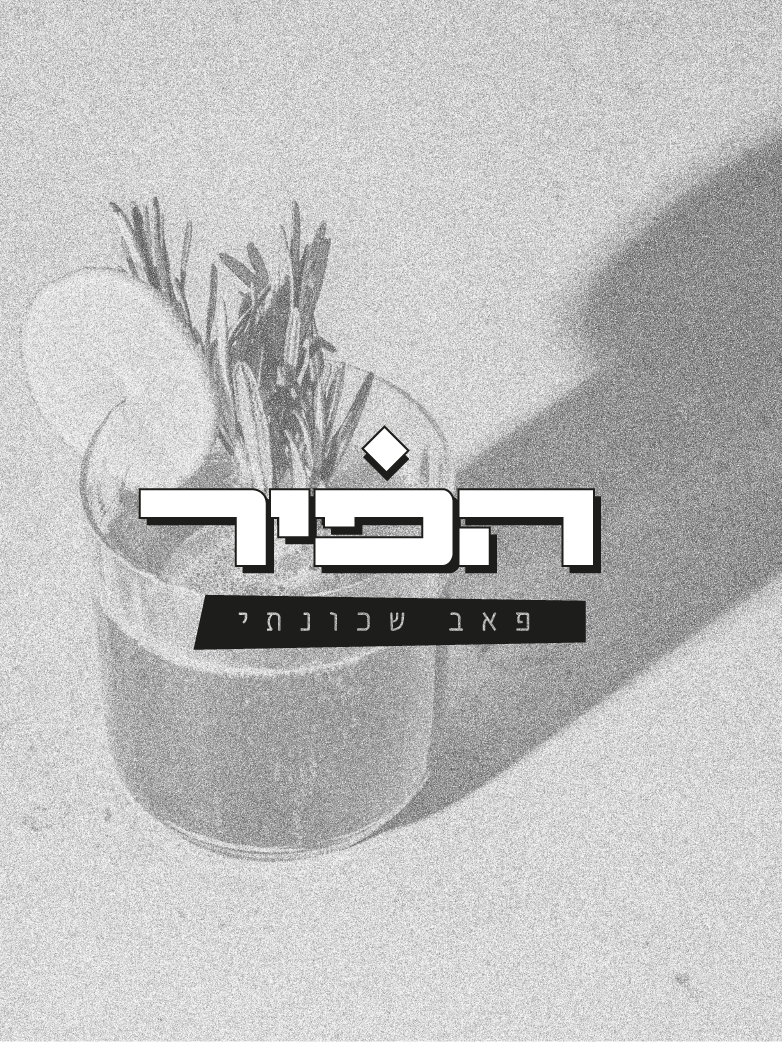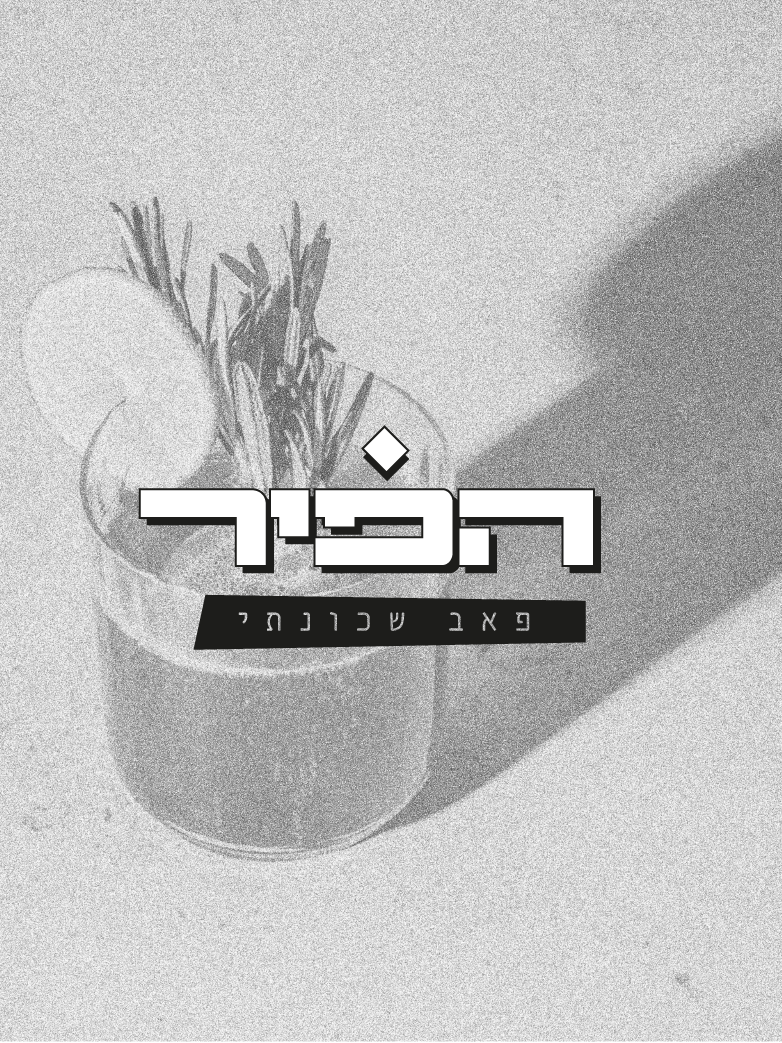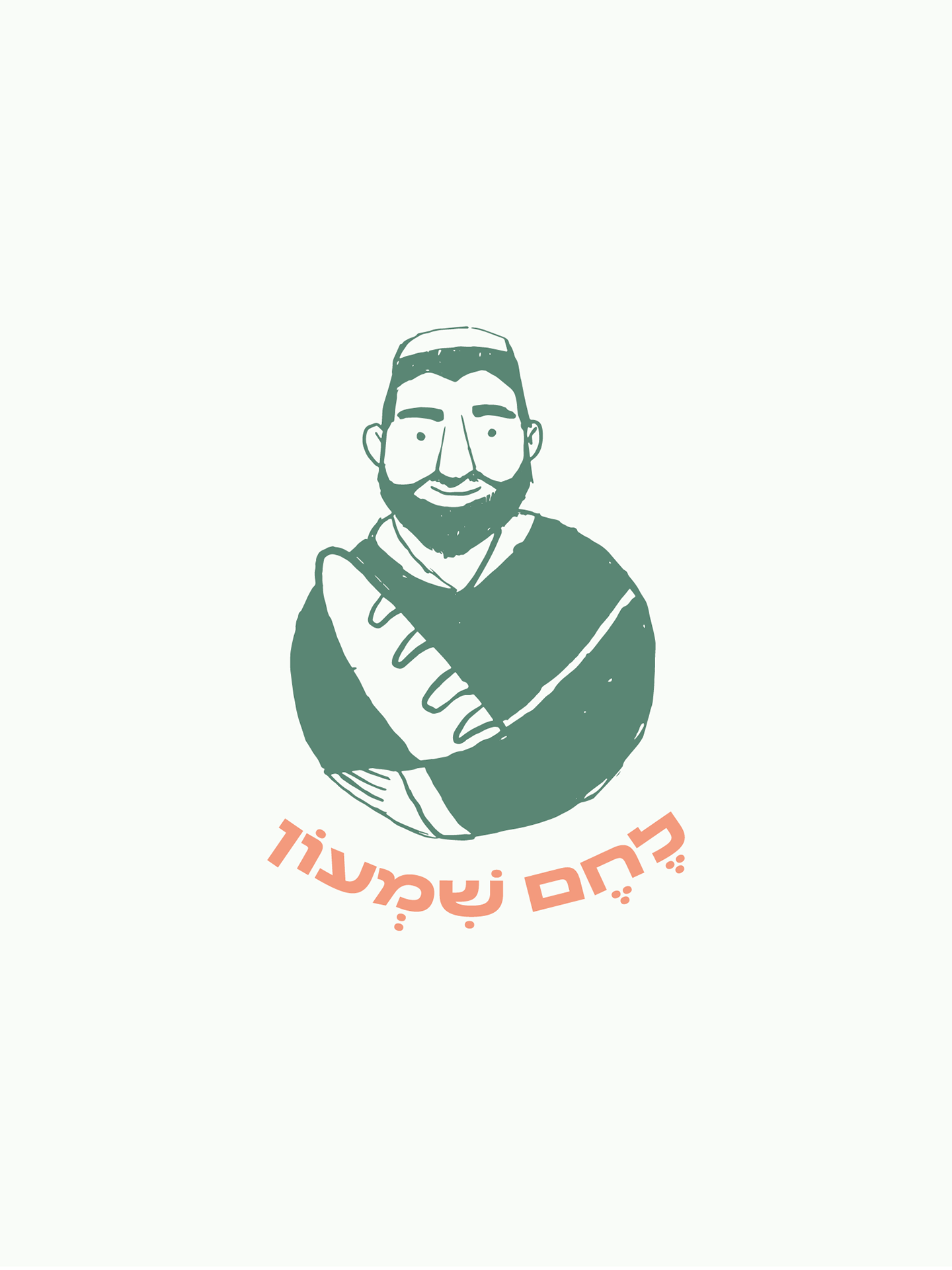.
Reuven brought mandrakes to his mother since it is a plant known for its fertility enhancing properties. Rachel was barren so she desired the mandrakes. She entered into a negotiation with her sister Leah, sacrificing her night with Jacob in exchange for the mandrakes. The story tells us that as a result of this transaction Yissachar was born to Leah and Rachel gave birth to Josef.
"I have hired you with my son’s mandrakes. And he lay with her"
Genesis, 30, 15
"Shimon’s precious stone is the Pitteda, his cloth is colored green and has the drawing of the city of Shchem on it" (Bamidbar Raba, 2, 7).
The choice of drawing the city of Shchem on the flag of the tribe of Shimon seems strange. This emphasises and highlights the sin of Shimon to which Jacob vehemently opposed. We find much indignation to their behavior, for example: ״Who murder on the road to Shechem, For they have encouraged depravity״ (Hosea 6, 9). ״In the way that robbers sit by the wayside and kill people to take their money, so did Shimon and Levy do to Shchem״ (Bereishit Rabba 80, 2). We need no more than the explicit words of Jacob when he ״blessed״ them before his passing: “Cursed be their anger so fierce and their wrath so relentless"
"Their wrath so relentless"
Genesis, 49, 7
"The tribe of Levi’s precious stone is the Bareket, his cloth is painted a third white, a third black and a third red which has a painting of the Urim and Tumim on it" (Bamidbar Raba, 2, 7).
The connection of the tribe of Levi to the Urim and Tumim, the breastplate worn on
the heart of the High Priest is mentioned in Moshe’s blessing: ״And to Levi he said: Let your Tummim and Urim be with your faithful one, whom you tested at Massah, challenged at the waters of Meribah״. The Urim had the entire alphabet on the breastplate. The Tumim were the understanding heart of the priest who knew how to connect the letters to make words and phrases. The central role of the priest, which continues in prayer services
to this very day, is the priestly blessing. This is done by the priests, lovingly facing their congregation while raising and spreading their hands in a special way. Priests descend from the tribe of Levi and represent all which is correct and good.
"They shall teach Your laws to Jacob and Your instructions to Israel"
Deuteronomy, 33, 10
"The precious stone of the tribe of Yehuda is Nofach, the color of his cloth is similar to the sky and it has a drawing of a lion on it" (Bamidbar Rabba 2, 7).
The sign of the lion comes from Jacob’s blessing: ״Judah is a lion cub; On prey, my son, you have grown. He crouches, lies down like a lion, and as the king of beasts-who dare rouse him (Genesis 49, 9). The lion is known as the symbol of royalty. The lion of the king of all animals wild and tame. (Midrash Tehillim, Psalm 22). He included them all as one and made them into lions (Midrash Bereishit Rabba 99, 4) This means that in the future all the symbols and flags will unite under the tribe of Yehuda.
"...He crouches, lies down like a lion, Like the king of beasts—who dare rouse him?"
Genesis 49, 9
"The sign of the tribe of Yisachar is the Sapphire, his cloth is dark blue, almost black and has the sun and moon painted on it" (Bamidbar Rabba 2, 7)
״Some of the tribe of Yissachar had the knowledge to understand the time, to determine how Israel should act״ (Chronicles I 12, 33). The children of the tribe of Yissachar were experts in Torah, the wisdom of the calendar and the times of the year. Hence the symbol of Yissachar is the moon. Which times did they have the knowledge to understand? Rebi Tanchuma said the best time for everything according to the stars, Rebi Yossi the son of Kizri said for leap years. ״their chiefs were 200, and all their kinsmen followed them״ (Chronicles I 12, 33). Yissachar’s descendants gave 200 heads to the Sanhedrin and all their brothers agreed that the halacha was according to their decree and their word was accepted as if it was coming from Moses at Sinai. (Breshit Raba 72, 5)
"Of the Issacharites, men who knew how to interpret the signs of the times"
I Chronicles, 12
"Zevulun’s precious stone is a Diamond, his cloth is white and has a drawing of a boat on it, as it says in Moses’: "Zevulun shall dwell by the seashore". (Genesis 49, 13) (Bamidbar Rabba 2, 7)
Zevulun is identified with sea trade. The verse says: "Rejoice Zevulun in your going forth"from which the Sifri learns that he was a broker taking produce from his brethren and selling it to the neighboring nations and returning with their produce sell to his brethren. (Sifrei Devarim 354)
"Zebulun shall dwell by the seashore"
Genesis 49, 13
Dan’s precious stone is the Leshem and his cloth is like sapphire with a snake drawn on it as it says: "Dan shall be a serpent by the road" (Bamidbar Rabba 2, 7).
"Dan will judge his people."This tribe had walked loyally in the footsteps of Moses as well as of Joshua as testified to in Joshua 6,9: והמאסף הולך אחרי הארון, "and the rearguard walked behind the Holy Ark."It was this tribe’s task to ward off any attacks from the rear. They had been assigned this task as they were considered exceptionally brave. The word ידין, may therefore best be translated as: "he will avenge. "Compare Deuteronomy 32,36, “for the Lord will avenge His people".
Dan shall be a serpent by the road, A viper by the path, That bites the horse’s heels So that his rider is thrown backward. A snake has the ability to overthrow a chariot. Despite its small size it has great power.
"Dan shall be a serpent by the road, A viper by the path"
Genesis: 49,17
Gad’s precious stone is the Shvoh, the color of his cloth is neither white nor black but a mix of black and white and has a drawing of a camp on it, as it says: "From Gad will come forth raiding parties" (Bamidbar Rabba 2, 7)
This represents a military camp and illustrates the power and bravery of the sons of Gad who were outstanding warriors and forged ahead, leading the entire army. Once the tribes of Gad, Reuven and half the tribe of Menashe conquered the land east of the Jordan river, they returned to lead their brethren in their conquest.
"From Gad will come forth raiding parties and they will all return home safely"
Genesis: 49,13
The precious stone of Naftali is the Achlamah and his cloth is like clear wine whose redness isn’t fierce and it has a deer drawn on it as it says: "Naphtali is a hind let loose" (Bamidbar Rabba 2, 7)
Naftali’s speediness is known from the famous Agadda which describes his swift journey to Egypt and back in order to bring the deed of the buying of the Cave of Machpela in Chevron to prove Jacob’s legal right to be buried there when Esav tried to stand in their way. (Midrash Bereishit Raba 107)
"Naphtali is a hind let loose, Which yields lovely fawns"
Genesis: 49, 21
"The precious stone of Asher is Tarshish, his cloth is like a precious jewel which women wear to beautify themselves and it has a drawing of an olive tree on it, as it says: "Asher’s bread shall be rich" (Midrash Bereishit Raba 2, 7).
The food that will come from the territory of Asher will be fat, for there will be numerous olive-trees in his territory so that it will flow with oil like a fountain. Moses blessed him in a like manner:"and he will dip his foot in oil". "Olive trees are plentiful in the portion of Asher, this is a witness to plentiful rain" (Rashi on Genesis 49, 20).
"Asher’s bread shall be rich, And he shall yield royal dainties"
Genesis: 49, 20
"Josef’s precious stone is the Shoham and his cloth is a deep black with the drawing of two founding fathers - Efrayim and Menashe. These are the tribes who were born in Egypt. On the map of Efrayim there is a drawing of a bull as it says: "Like a bull in his majesty"(Deuteronomy 33, 17) This refers to Joshua who came from the tribe of Efrayim. On the cloth of the tribe of Menashe there’s a drawing of a wild ox as it says: "whose horns are like the horns of an antelope". This refers to Gideon the son of Yo’ash who was from the tribe of Menashe" (Bamidbar Raba 2, 7).
One precious stone on the breastplate of the high priest represented both Efrayim and Menashe. However while travelling each camp had their own flag. Their combined color was that of the Shoham, their father Joseph’s precious stone but their flags were different, one with a bull and the other - a wild ox.
"Like a firstling bull in his majesty, He has horns like the horns of the wild-ox"
Deuteronomy 33,17
The precious stone of Benjamin is the Yashpeh, the color of it’s cloth resembles all the colors and it has on it a drawing of a wolf as it says:"Benjamin is a ravenous wolf" (Midrash Bamidbar Rabba 2, 7)
The movement of ebb and flow is characteristic of the tribe of Benjamin and represents the complete divine attachment which includes the inner tension between in and out. In all his motions, Benjamin cannot be totally in the center of the activity, he always leaps forward, grabs and goes back to his place. This quality can be seen in different levels of his personality both as a slave, a son and a wife. As a slave, Benjamin goes out to fight in the war of Pilegesh BaGiva and then returns to them in Shilo. As a son, he goes to fight the nations and Amalek but does not gain the permanence of royalty. As a wife, the portion of Benjamin is the place for the holy Shechina, the presence of G-d, which is beyond earthly measurement.
"Benjamin is a ravenous wolf; In the morning he consumes the foe, And in the evening he divides the spoil"
Genesis: 49, 27
Portfolio exhibition “Yotzim La’Or” Exhibition in Jaffa, August 2020 in which the flag of the tribe of Zevulun, one of the twelve flags, was exhibited.
.
"Migzariyut" Exhibition ,October 2020 in Tel Aviv where all twelve flags of the twelve tribes were exhibited. febric, 80 cm on 3 meter.
